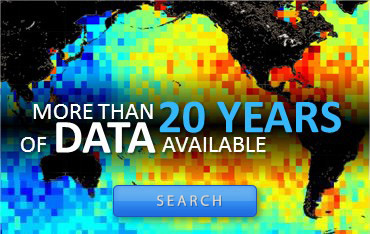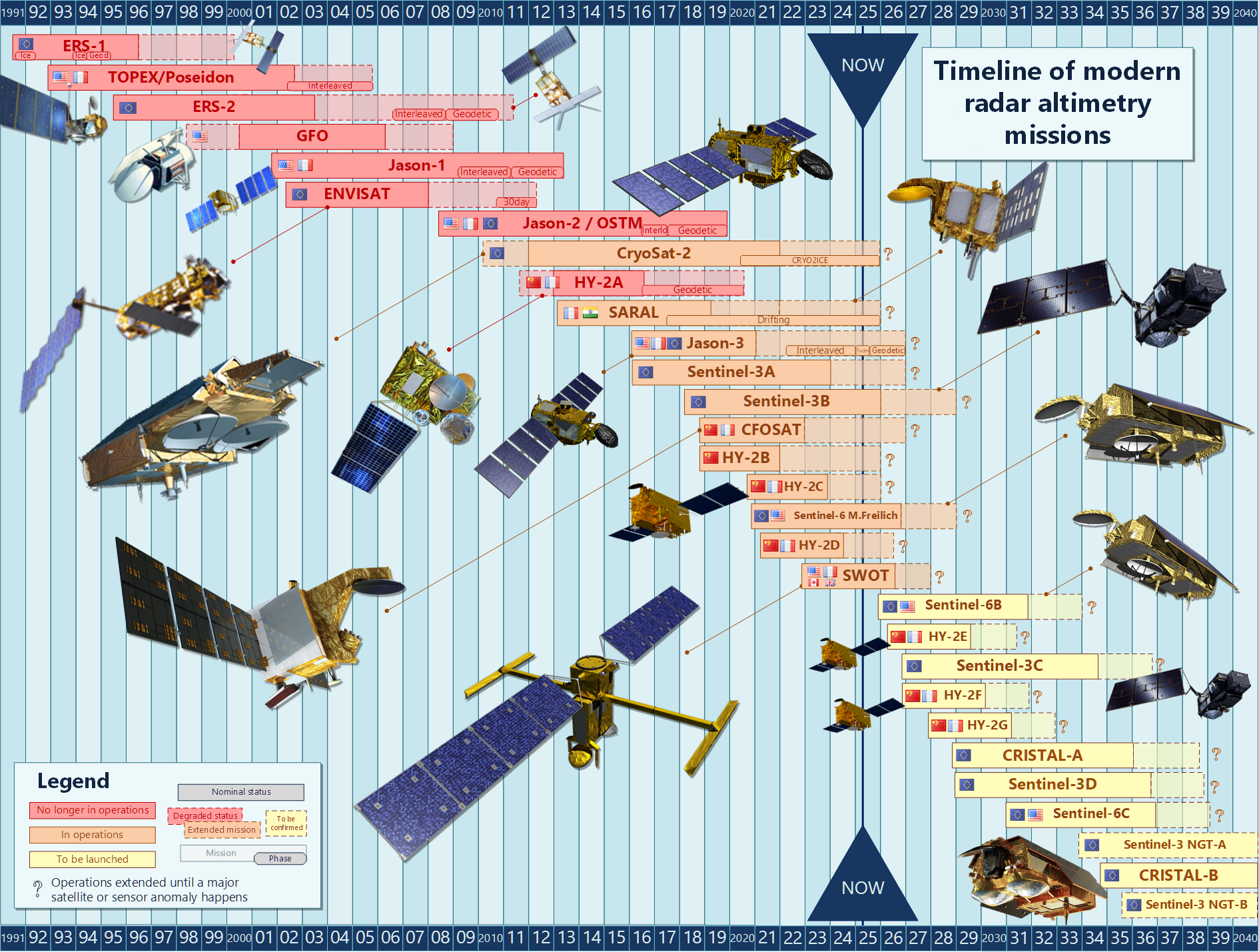Waves trapped along the coasts monitored by altimetry, thanks to Swot (and others)
Image of the Month - May 2025
![Hovmöller diagrams of Swot and nadir altimeter grid (MIOST) and model (BlueLink) filtered time series along the eastern Australian coastline. (from [Passaro, 2025], credit DGFI-TUM) Hovmöller diagrams of Swot and nadir altimeter grid (MIOST) and model (BlueLink) filtered time series along the eastern Australian coastline. The point of reference of the x-axis is the southwestern most coastal point of the region of study. The dotted lines correspond to the best estimate of the westward propagation speed. (from [Passaro, 2025], credit DGFI-TUM)](/fileadmin/_processed_/7/2/csm_202505_egusphere-2025-809-14_319a8f5c51.png)
In some coastal areas you can find waves propagating along the coast, aka "coastally trapped waves", materialized by a sequence of higher/lower sea surface heights. They can be triggered by different phenomena, such as winds, or typically along the western coasts of Americas, Rossby waves having crossed the Equatorial Pacific and propagating in part north and south after "bumping" on the continent. Their amplitude is maximum closer to the coasts and decrease quickly when going further, especially off the continental shelf. They can have an impact on upwellings, local ocean dynamics on the continental shelf etc.
Until recently few options were available to observe them all along their propagation - in situ tide gauges are scarcely sparsed even if they measure near-continuously, gridded altimetry data were too much filtered with possibly no measurement track over parts of the area of study. Nowadays with Swot 2D-observations, altimetry data processing improvements near the coasts, and a large number of altimetry satellites currently measuring, things have changed. It is now possible to observe daily unsmoothed Sea Surface Height data close to the coasts with good spatial resolution and details. Swot by itself would provide this but "only" every 21 days over a given swath -- in fact, at worse half this period when considering all possible swaths over an area, even shorter periods in some areas -- , a too-long period for phenomena such as coastally trapped waves to be monitored properly. Combining it with the nadir altimeters currently measuring enables to provide daily data, though, including near the coasts.
A study from the Deutsches Geodätisches Forschungsinstitut at the Technical University of Munich (DGFI-TUM), currently under review examines these new altimetry data along the eastern coast of Australia comparing them with model and in situ data, and showing that indeed, now, combined nadir and Swot gridded altimetry data can also be used to monitor coastally trapped waves - and probably other coastal phenomena with similar time frequencies. The wealth of new phenomena made possible by the recent improvements in altimetry, especially by Swot, is only beginning to be revealed.
See also:
- Image of the Month, August 2010: Altimetry helps search for a wreck
- Applications / Ocean: Rossby, Kelvin waves
- Applications / Coastal: High-resolution coastal observations
- Missions: Swot
- Data: Experimental multimission gridded L4 sea level heights and velocities with Swot
Reference:
- Passaro, M., Can satellite altimetry observe coastally trapped waves on sub-monthly timescales?, submitted to Ocean Science (OS), doi.org/10.5194/egusphere-2025-809






![Carte de situation. (d'après [Passaro, 2025], crédit DGFI-TUM) Carte de situation. La boîte verte ("parallelogram") montre la région dans laquelle les données sur le niveau de la mer sont analysées. Les marégraphes disponibles sont également indiqués. (d'après [Passaro, 2025], crédit DGFI-TUM)](/fileadmin/_processed_/7/4/csm_202505_egusphere-2025-809-7_1d64180397.png)











